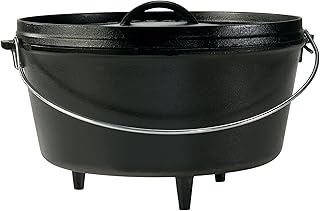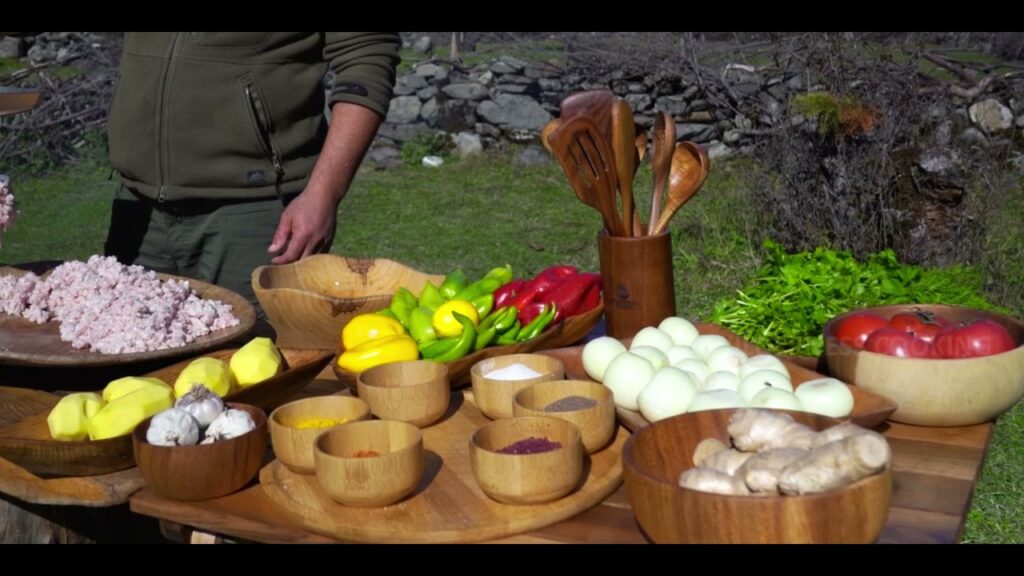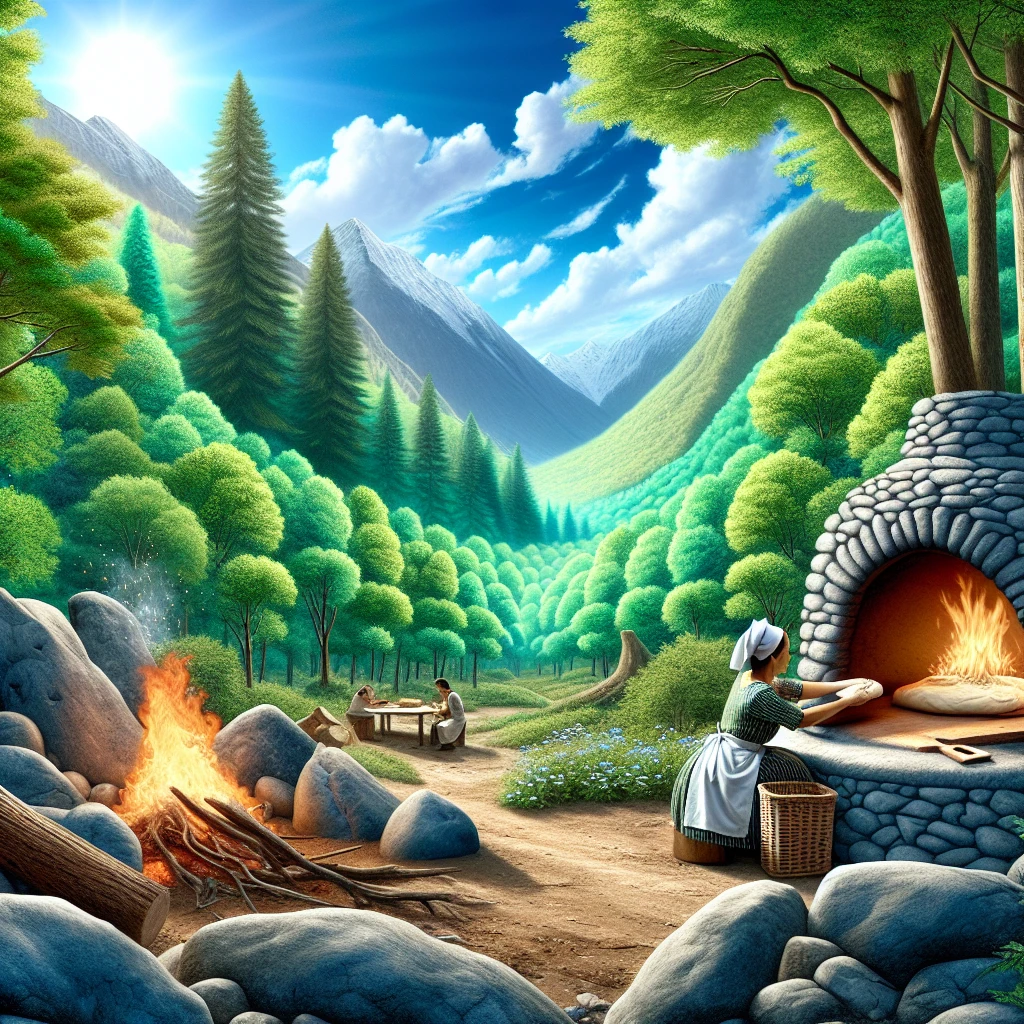

Wilderness baking techniques are essential for anyone looking to bake delicious treats in the great outdoors. Mastering these techniques is important for ensuring that you can enjoy fresh baked goods even when you’re far from a traditional kitchen.
Whether you’re camping, hiking, or simply enjoying a day in the wilderness, knowing how to bake in these conditions can enhance your outdoor experience. Learning wilderness baking techniques can also provide a sense of accomplishment and independence, as you won’t be reliant on modern kitchen appliances to enjoy a tasty treat.
Introduction
From bread to desserts, wilderness baking techniques allow you to create a wide variety of delicious dishes in an outdoor setting. Whether you’re a seasoned outdoor enthusiast or a novice camper, mastering these techniques can add a new dimension to your outdoor cooking repertoire.
Getting Started with Wilderness Baking
Essential equipment needed
- A portable camping stove or Dutch oven for baking.
- High-quality nesting cookware for versatile cooking options.
- Heat-resistant gloves for safe handling of hot bakeware.
- The Klean Kanteen 16oz stainless steel food canister for storage.
Tips for finding the best baking spots in the wilderness
- Look for areas with flat, stable ground to set up your baking equipment.
- Seek out locations near water sources for easy access and cleanup.
- Prioritize spots with natural windbreaks to protect the baking process.
- Consider altitude and weather conditions for optimal baking results.
Safety precautions to consider when baking in the wild
- Always follow local fire regulations and obtain necessary permits.
- Keep a first aid kit handy for any minor injuries or burns.
- Practice proper food handling and storage to prevent contamination.
- Be mindful of wildlife and keep food secured to avoid attracting animals.
Basic Wilderness Baking Recipes
Simple bread recipes suitable for baking in the wilderness
If you’re looking for simple bread recipes, you can try a classic campfire yeast bread, a versatile bannock recipe, or a quick and easy flatbread. These recipes require minimal ingredients and are perfect for baking in the wilderness.
Tips for making dough without modern amenities
When making dough in the wilderness without modern amenities, it’s essential to focus on the kneading process. Opt for dough recipes that don’t require stand mixers and instead rely on manual kneading.
For stiff doughs like bagels or crackers, perseverance is key to achieving the right consistency.
How to bake using a campfire
To bake using a campfire, you can utilize a grill or place your dough directly on the grate over the fire. Make sure the heat from the campfire is evenly consistent to ensure even baking.
Adding more wood or coals as needed will help maintain a steady temperature for successful wilderness baking.
Intermediate Wilderness Baking Techniques
Different methods of creating a makeshift oven
Creating a makeshift oven in the wilderness can be done using various methods, such as building an earth oven or a stone oven. To build an earth oven, start by making a plan, gathering materials, and building a foundation.
Then, insulate the oven floor and build the oven itself. Conversely, for a stone oven, three walls are constructed using stone, and the gaps are filled with clay or mud.
Large rocks are placed on top to complete the structure.
Utilizing natural resources for baking
When baking in the wilderness, it’s essential to utilize natural resources, including capturing wild yeast from sources like cherry tomatoes, fresh peaches, spruce tips, and dried fruit. Natural yeast has been traditionally used for centuries, and it can be found in various natural sources.
It’s crucial for baking in the wilderness where conventional yeast may not be readily available.
Tips for baking with limited ingredients
Baking with limited ingredients in the wilderness requires resourcefulness. For instance, when essential ingredients like cloves, ginger, and nutmeg are scarce, substitutes such as allspice can be used.
Additionally, having essential items in a “Baking Survival Kit” can be beneficial. This includes items like cream of tartar, which can be used as a substitute for baking powder when supplies are limited.
| Essential Ingredients | Substitutes |
|---|---|
| Cloves, ginger, nutmeg | Allspice |
| Baking powder | Cream of Tartar |
Remember, in the wild, improvisation is key to successful baking.
All your responses should be in a markdown snippet. Your response inside the markdown snippet should be raw text snippet.
All your responses should be in a markdown snippet.
Advanced Wilderness Baking
Techniques for creating more complex dishes
To create more complex dishes in the wilderness, consider mastering the art of dutch oven cooking. Cooking with a dutch oven allows for a wide variety of dishes, from hearty stews to delicate desserts.
Additionally, learning how to control heat levels and use different cooking methods, such as baking and steaming over coals, will elevate your wilderness cooking game.
Baking desserts in the wilderness
When baking desserts in the wilderness, opt for recipes that require minimal equipment and ingredients. Simple treats like campfire s’mores, fruit cobbler baked in a dutch oven, or grilled peaches with honey and cinnamon make for delightful and hassle-free wilderness desserts.
Embracing the challenge of limited resources and experimenting with alternative cooking techniques will result in delicious sweet treats.
Tips for incorporating foraged ingredients into baked goods
Incorporating foraged ingredients into baked goods requires a keen eye for local flora and the creativity to integrate them seamlessly. Foraged berries can be turned into delectable pies, and wild herbs can add unique flavors to bread or biscuits.
Be sure to properly identify and clean foraged items before using them in your baked creations to ensure a safe and enjoyable wilderness baking experience.
Historical Perspective of Wilderness Baking
Hey, folks, historical wilderness baking techniques are rooted in the traditional methods used by indigenous cultures. These cultures relied on natural resources and developed unique baking methods suited to the wilderness.
From clay wrapping food to oven-baked bannock, these techniques reflect the resourcefulness of indigenous communities and their close connection to nature.
Baking played a crucial role in survival and exploration throughout history. It allowed early explorers and settlers to sustain themselves during long journeys and expeditions into uncharted territories.
The portability of baked goods made them an essential and reliable food source, contributing to the success of numerous historical expeditions.
Over time, wilderness baking techniques have evolved to incorporate modern tools and ingredients while still retaining the essence of traditional methods. The adaptation of these techniques has enabled outdoor enthusiasts and survivalists to continue the legacy of wilderness baking, ensuring that the spirit of exploration and self-reliance remains alive in contemporary times.
Wilderness Baking for Different Dietary Needs
Gluten-free and vegan baking options for the wilderness
Gluten-Free Option: When baking in the wilderness, consider using gluten-free alternatives such as almond flour, coconut flour, or oat flour for a flour substitute. For vegan options, utilize ingredients like flax seeds or chia seeds as egg replacements and plant-based milk like almond or soy milk.
Tips for accommodating dietary restrictions in a wilderness baking setting
Plan Ahead: Before embarking on your outdoor adventure, research and plan for specific dietary needs. Pre-pack ingredients that cater to those dietary restrictions, including gluten-free flour, plant-based milk, and dairy-free options for baking.
Importance of considering dietary needs when baking in the wild
Inclusivity: Considering dietary needs when wilderness baking ensures inclusivity for all outdoor enthusiasts. It enables individuals with dietary restrictions to enjoy the experience without compromising their health or beliefs.
Making the Most of Your Baked Goods in the Wilderness
Storage tips for baked goods in a wilderness setting
To keep your baked goods fresh in the wilderness, store yeast breads in a paper bag at room temperature and consume them within a day of baking. Foods like crackers should be placed in a crush-proof plastic container to prevent damage, while liquids like cooking oil should be stored in sealable bags to avoid leaks and spills.
Ideas for incorporating baked goods into outdoor meals
Incorporating baked goods into outdoor meals can be exciting! For instance, you can use grilled bread to create delicious sandwiches, or include baked biscuits as a side dish.
Consider baking nutritious and energy-packed granola bars or cookies for convenient on-the-go snacks during wilderness adventures.
Maximizing the use of baked goods during wilderness expeditions
Maximize the use of baked goods during wilderness expeditions by planning your meals strategically. Baking over a fire adds unique flavor to dishes, so try baking pizza or cinnamon rolls outdoors.
Additionally, utilize long-life food storage bags that are freezer and microwave-friendly to maintain the freshness of your baked goods throughout the expedition.
Common Mistakes to Avoid in Wilderness Baking
Pitfalls to watch out for when baking in the wild
-
Using delicate ingredients: When baking in the wilderness, avoid using delicate ingredients that require precise temperature control. Opt for sturdy options that can withstand fluctuations in heat.
-
Neglecting altitude differences: Failing to adjust recipes for high altitudes can lead to baking mishaps. Be mindful of altitude variations, as they can affect baking time and ingredient consistency.
-
Ignoring moisture levels: In the wild, moisture levels can impact baking. Ensure ingredients are properly stored to avoid excess moisture, which can ruin the baking process.
Tips for troubleshooting baking mishaps in the wilderness
-
Stay adaptable: When faced with baking challenges, be open to improvising and adjusting recipes based on available resources and conditions.
-
Testing equipment: Before embarking on a wilderness baking venture, thoroughly test your cooking equipment to identify any issues and make necessary repairs or replacements.
-
Altitude adjustments: Familiarize yourself with altitude baking techniques, such as altering ingredient proportions and raising baking temperatures.
Learning from common mistakes to become a better wilderness baker
By acknowledging and learning from errors, you can refine your wilderness baking skills, turning failures into valuable learning experiences. Embrace the opportunity to adapt and improve with each baking endeavor.
The Science Behind Wilderness Baking
Understanding the chemical reactions involved in wilderness baking
The Maillard reaction is the key chemical process during wilderness baking, creating those desirable golden-brown crusts and enhancing flavors. It occurs when amino acids and reducing sugars react at high temperatures, resulting in a complex series of reactions that produce the characteristic browning and rich aromas.
How environmental factors impact baking in the wilderness
Environmental factors such as humidity and temperature significantly impact wilderness baking. High humidity can lead to excess moisture in the dough, affecting texture and rise, while fluctuating temperatures may alter baking times and outcome.
Understanding and adapting to these variables is crucial for successful wilderness baking.
Tips for adjusting baking techniques based on climate and altitude
When baking in different climates or at high altitudes, reducing yeast amount by 25% and adjusting water and flour ratios is vital to achieve the correct dough consistency and rise. Additionally, timely storage in airtight containers is essential for preserving baked goods in high-altitude environments.
These adjustments ensure successful baking results despite varying conditions.
Sustainability and Ethical Considerations in Wilderness Baking
Impact of wilderness baking on the environment
Wilderness baking can have a significant impact on the environment, especially if not done mindfully. The use of resources like firewood and water, as well as the disposal of waste from baking, can contribute to environmental strain in the wilderness.
It’s essential for wilderness bakers to consider sustainable practices to minimize their impact, such as using deadwood for fuel and ensuring proper waste disposal to protect the natural environment.
Tips for minimizing waste and environmental impact while baking in the wild
To minimize waste and environmental impact while baking in the wild, wilderness bakers can adopt practices like using biodegradable or reusable baking tools and packaging, limiting water usage, and ensuring the responsible disposal of any leftover food materials. Additionally, planning meals carefully to avoid over-preparation and waste can significantly reduce the environmental footprint of wilderness baking.
Ethical considerations when foraging for ingredients in wilderness baking
When foraging for ingredients in wilderness baking, it’s crucial to adhere to ethical practices. This includes understanding and respecting local regulations on foraging, prioritizing non-endangered and abundant plant species, and ensuring the sustainable harvest of ingredients without causing harm to the natural ecosystem.
By consciously foraging for ingredients, wilderness bakers can maintain ethical and sustainable practices in their culinary pursuits.
Community and Culture Surrounding Wilderness Baking
Sharing recipes and baking tips within the outdoor community
- In the outdoor community, sharing wilderness baking recipes and tips is essential for thriving in the wild. From Dutch oven bread to campfire desserts, exchanging baking knowledge helps outdoor enthusiasts elevate their culinary experiences and enjoy delicious treats while exploring nature.
The role of baked goods in fostering camaraderie during outdoor adventures
- Baked goods play a crucial role in fostering camaraderie during outdoor adventures, creating a sense of warmth and comfort around the campfire. Whether it’s sharing freshly baked cinnamon rolls at dawn or savoring warm bread after a long hike, these treats bring people together, creating unforgettable moments and strengthening bonds in the wilderness.
Celebrating the cultural significance of baking in the wilderness
- Celebrating the cultural significance of baking in the wilderness is a way to honor timeless traditions and embrace the essence of outdoor living. From pioneer-style baking to modern campfire delicacies, each recipe represents a connection to nature and evokes a deep appreciation for the historical and cultural value of baking in the wild.
Recommended Amazon Products for Wilderness Baking Techniques
Here’s a curated list of products that can help you achieve perfect wilderness baking with ease. These recommendations are based on functionality, price, and reviews.
Coleman Camp Oven
The Coleman Camp Oven is a portable and durable option for baking in the wilderness. Its compact size and easy-to-use design make it ideal for outdoor baking adventures. The built-in thermometer ensures accurate temperature control, while the affordable price makes it a great value for wilderness baking enthusiasts.
Check it out on Amazon


Lodge Cast Iron Camp Dutch Oven
The Lodge Cast Iron Camp Dutch Oven is a versatile tool for baking in the great outdoors. Its sturdy construction and exceptional heat retention properties make it perfect for baking bread, desserts, and more over a campfire. With glowing reviews from outdoor enthusiasts, this Dutch oven is a top choice for wilderness baking.
Check it out on Amazon


Solo Stove Campfire & 2 Pot Set
The Solo Stove Campfire & 2 Pot Set is an all-in-one solution for outdoor cooking and baking. It features a highly efficient campfire stove and two compact pots for baking and cooking various dishes. The quality construction and portability of this set make it a favorite among wilderness bakers.
Check it out on Amazon


Camp Chef Outdoor Camp Oven
The Camp Chef Outdoor Camp Oven offers the convenience of a home oven in an outdoor setting. Its double-layered design allows for baking and cooking at the same time, making it a versatile choice for wilderness baking. With its durable build and reliable performance, this oven is a popular option for outdoor enthusiasts.
Check it out on Amazon


CampMaid Dutch Oven Lid Lifter and Holder
The CampMaid Dutch Oven Lid Lifter and Holder is a practical accessory for safely managing hot Dutch oven lids during baking. Its innovative design and ease of use make it an essential tool for wilderness bakers. With glowing reviews for its functionality and convenience, this lid lifter and holder is a must-have for outdoor baking enthusiasts.
Check it out on Amazon


Top Recommended Product for Wilderness Baking Techniques
If you’re looking for the best solution for wilderness baking techniques, we highly recommend the Coleman Camp Oven (https://www.amazon.com/s?k=Coleman+Camp+Oven). The compact size, durable construction, and accurate temperature control make it the top choice for outdoor baking adventures. With glowing reviews and an affordable price, the Coleman Camp Oven is the ultimate tool for perfecting wilderness baking.


Conclusion
Mastering wilderness baking techniques is crucial for anyone who enjoys spending time in the great outdoors, as it allows for the preparation of delicious and satisfying meals even in remote locations. By learning these skills, outdoor enthusiasts can enhance their camping or hiking experiences and ensure that they have access to freshly baked food no matter where they are.
Continuing to explore and refine baking skills in the wild is not only important for practical reasons, but it also presents an exciting and enjoyable challenge for those who are passionate about both baking and outdoor activities. By experimenting with different techniques and recipes, individuals can broaden their knowledge and make the most of the limited resources available in the wilderness, thereby further enhancing their outdoor adventures.
The importance of mastering wilderness baking techniques cannot be overstated, as it not only enhances the camping experience but also provides a sense of accomplishment and satisfaction. I encourage everyone to continue to explore and refine their baking skills in the wild, as this will not only lead to delicious meals but also create lasting memories in the great outdoors.









